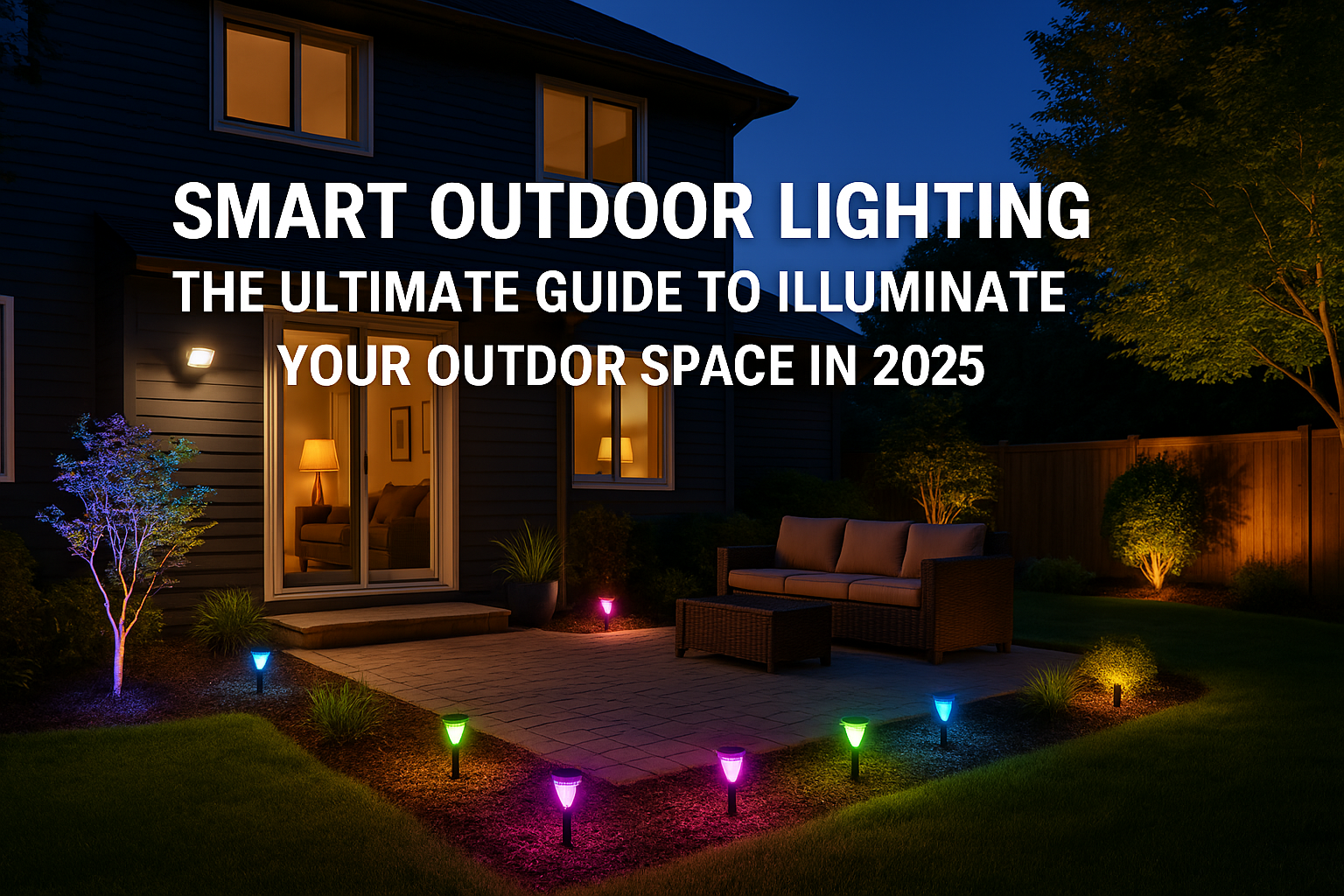
Introduction
Have you ever walked into a room and thought, “Why are the lights on?” It’s a common issue that not only wastes energy but also increases costs. Smart light sensors provide an efficient solution by automatically adjusting lighting based on environmental conditions, enhancing both convenience and sustainability.
How Smart Light Sensors Work
Smart light sensors detect light levels and respond accordingly, much like a light-sensitive assistant managing illumination. These devices range from basic to highly advanced models, but they all share the same goal: optimized lighting control.
They use photodiodes or photoresistors to measure ambient light. When brightness levels exceed or fall below a set threshold, the sensor sends a signal to adjust the lighting. In addition, some models incorporate motion detection, ensuring that lights turn on only when needed, further maximizing energy efficiency.
Most sensors communicate via Wi-Fi, Zigbee, or Bluetooth, allowing seamless integration with smart home systems and mobile apps for remote control. Consequently, users can manage lighting effortlessly from anywhere.
Types of Smart Light Sensors
Different types of smart light sensors cater to specific needs:
- Ambient Light Sensors (ALS): These measure natural light and adjust artificial lighting accordingly to maintain a consistent brightness level. They are commonly used in smart thermostats and automated window shades.
- Motion-Activated Light Sensors: By combining motion detection with light sensing, these sensors turn lights on only when movement is detected. As a result, they are ideal for security and energy-saving applications in areas like hallways and bathrooms.
- Daylight Harvesting Sensors: Designed for commercial buildings, these sensors adjust artificial lighting based on the amount of available natural light, reducing electricity consumption significantly.
- Multifunctional Sensors: These advanced models integrate both ambient light and motion detection, offering a comprehensive lighting solution for smart homes.
Key Components and Functionality
A smart light sensor typically consists of the following components:
- Sensor Element: Detects light intensity.
- Microcontroller: Processes data and determines necessary actions.
- Communication Module: Sends signals to adjust lighting accordingly.
When light conditions change, the sensor transmits data to the microcontroller, which then triggers the necessary lighting adjustments. Therefore, users experience intelligent, automated illumination with minimal effort.
Benefits of Smart Light Sensors
1. Energy Savings and Cost Reduction
Smart sensors optimize energy consumption, leading to significant reductions in electricity bills. Studies indicate savings of 20-60%, making these devices a cost-effective and eco-friendly upgrade.
2. Enhanced Security and Safety
Motion-activated sensors contribute to home security by illuminating areas when movement is detected, effectively deterring intruders. Moreover, outdoor lighting enhances safety, reducing the risk of accidents and falls.
3. Increased Convenience and Automation
These sensors automatically adjust lighting, dimming when natural daylight is sufficient. As a result, homeowners enjoy hassle-free, comfortable lighting control without the need for manual intervention.
Applications of Smart Light Sensors
1. Residential Lighting Control
Smart sensors integrate seamlessly with home automation systems, enabling remote lighting control via smartphone apps. This feature is particularly useful in high-traffic areas like hallways, kitchens, and living rooms.
2. Commercial Building Automation
Businesses benefit from occupancy sensors, which turn lights off in unoccupied rooms, thereby preventing energy waste. Additionally, warehouses utilize daylight harvesting technology to maximize natural light usage when possible.
3. Outdoor and Street Lighting
Cities employ adaptive lighting systems that dim streetlights during low-traffic hours. Furthermore, parks and security lighting also leverage smart sensors to enhance public safety while conserving energy.
Choosing the Right Smart Light Sensor
When selecting a smart light sensor, consider the following factors:
- Sensitivity Range: Determines how responsive the sensor should be.
- Communication Protocols: Ensure compatibility with Wi-Fi, Zigbee, or Bluetooth.
- Weather Resistance: A crucial feature for outdoor sensors exposed to varying environmental conditions.
Installation and Maintenance Tips
DIY Installation Guide
Many smart light sensors are easy to install. Therefore, following the manufacturer’s instructions carefully especially when handling wiring is essential for proper setup.
Troubleshooting Common Issues
- Connectivity Problems: Ensure a stable Wi-Fi or Zigbee connection.
- False Triggers: Adjust the sensor’s sensitivity settings.
- Sensor Failures: Check power sources and confirm proper placement.
Conclusion
In summary, smart light sensors offer a range of benefits, including energy savings, enhanced security, and automation. They are a valuable upgrade for homes, businesses, and public spaces. As technology continues to advance, these sensors will play an even greater role in intelligent energy management and home automation. If you’re ready to take control of your lighting, now is the perfect time to explore smart sensor solutions!
Want to dive deeper into the world of smart lighting? Find out more and explore our full guide to smart light sensors here.
